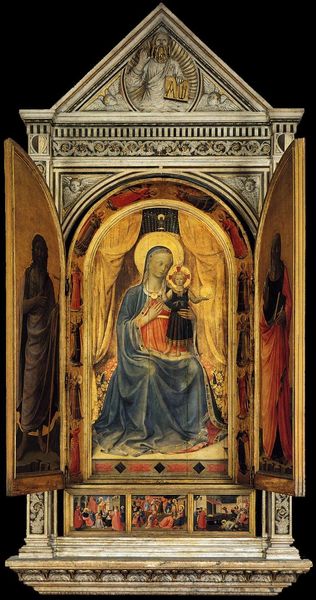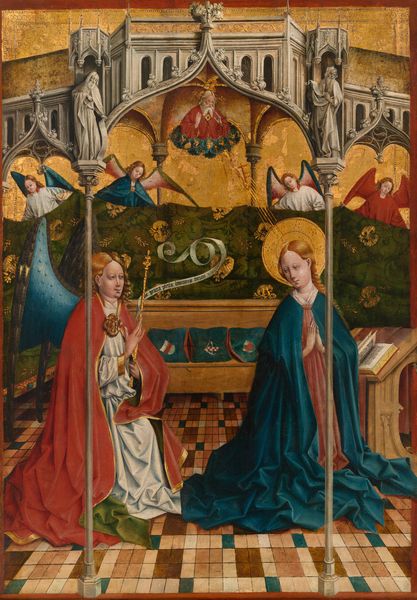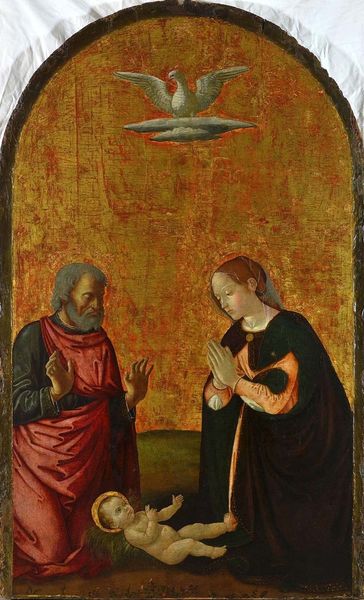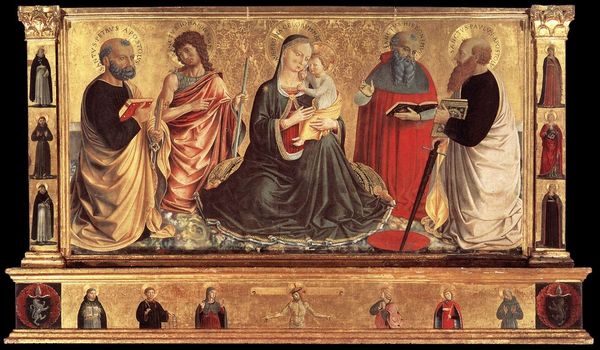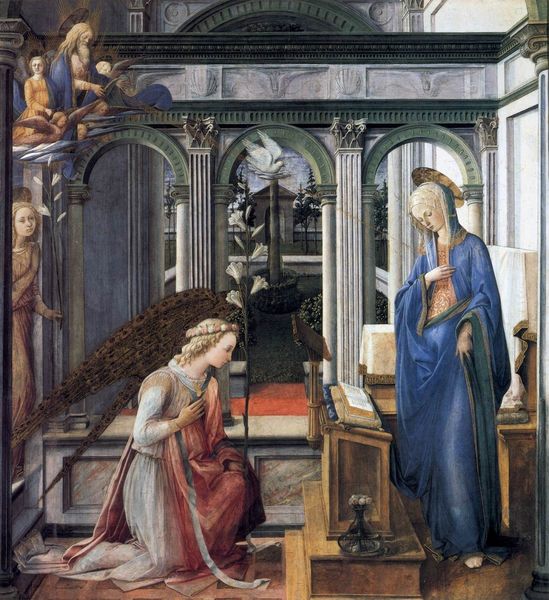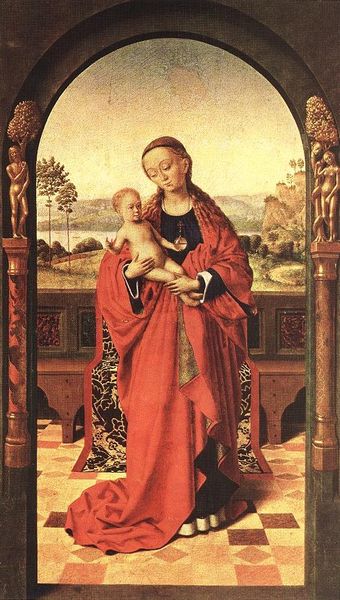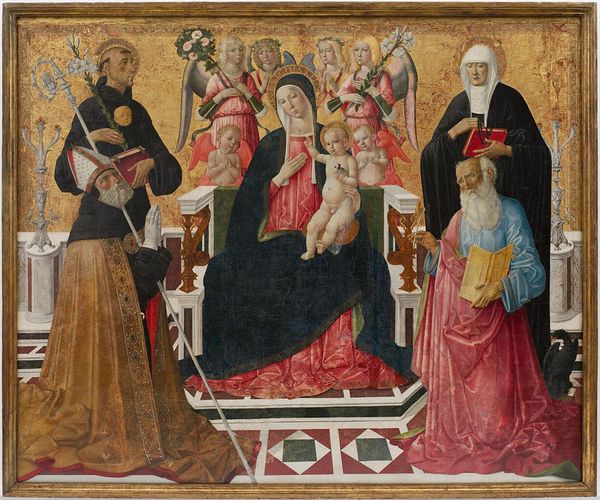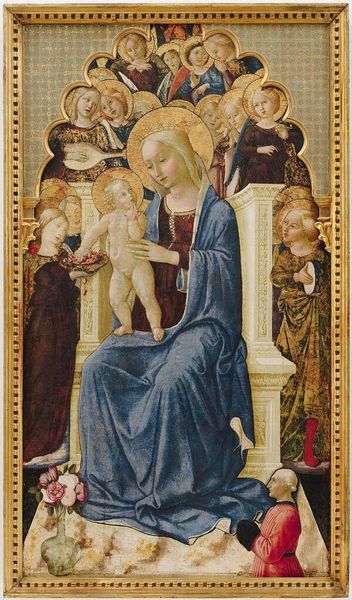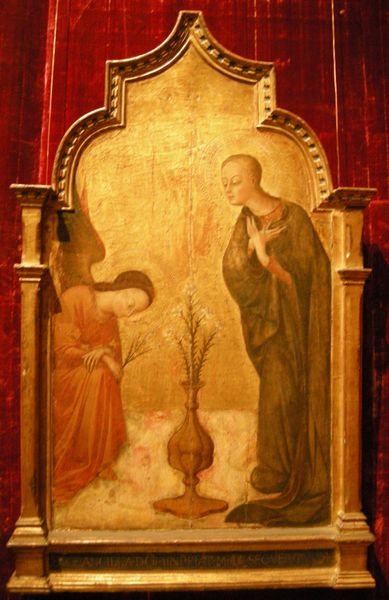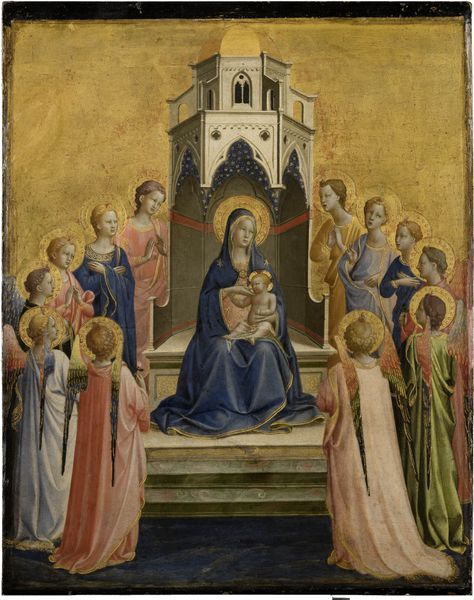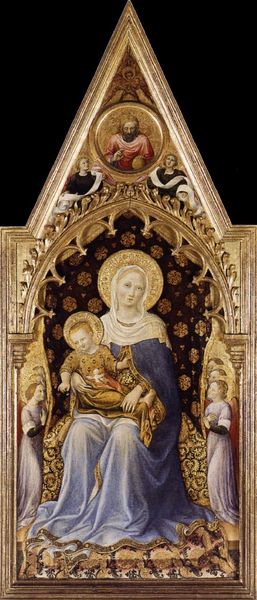
painting, oil-paint
#
allegory
#
painting
#
oil-paint
#
landscape
#
figuration
#
oil painting
#
christianity
#
genre-painting
#
history-painting
#
northern-renaissance
#
virgin-mary
#
angel
#
christ
Copyright: Public domain
Curator: Before us stands "The Annunciation," painted around 1520 by Bernhard Strigel. It resides at the Thyssen-Bornemisza Museum in Madrid. Editor: The piece strikes me immediately with its spatial organization. The distinct separation of figures within the panel creates an intriguing dialogue between containment and boundless potential. Curator: Precisely. Structurally, Strigel employs a diptych format, almost reminiscent of flanking architectural components. What's compelling is how this division focuses the viewer’s gaze—each panel containing not just an image but an essence. Editor: It is quite representative of its era. The socio-political landscape heavily influenced religious art. Depictions of Mary, such as in Strigel’s “Annunciation,” served a powerful function: they upheld an ideal, presenting a figure simultaneously divine and approachable for a mostly illiterate audience. The church, essentially, dictated its cultural representation. Curator: Yes, but also the very materiality! Consider how Strigel builds layers of meaning through colour: the Virgin in her contemplative blue and then Gabriel practically ablaze with otherworldly light; he guides our eyes through form as narrative and uses luminosity itself to construct its story. Editor: Looking more deeply, the staging choices reveal fascinating details as well. The positioning of Gabriel with the scroll and its invocation suggests power structures are in play. What kind of institutional patronage would inspire a message so blatantly conveying both divine authority and heavenly purpose for a woman on earth? Curator: Perhaps this reflects the changing artistic climates: with an artist finding himself caught between established patterns of representation even when striving after new approaches in form or composition! The artist must operate within—and sometimes against—established representational conventions and norms for depicting key sacred figures and religious allegories that also speaks subtly to this painting! Editor: In all honesty, seeing art like this grounds one—knowing how much human touch goes not just into the making of something beautiful but molding perspectives to impact viewers so directly generation after generation makes a person reflect. Curator: A very sound summary which encourages appreciating how artistry like Strigel pushes conceptual boundaries ever so delicately even across centuries thus shaping and challenging one’s viewpoint about our evolving cultures across varied eras ever.
Comments
No comments
Be the first to comment and join the conversation on the ultimate creative platform.
